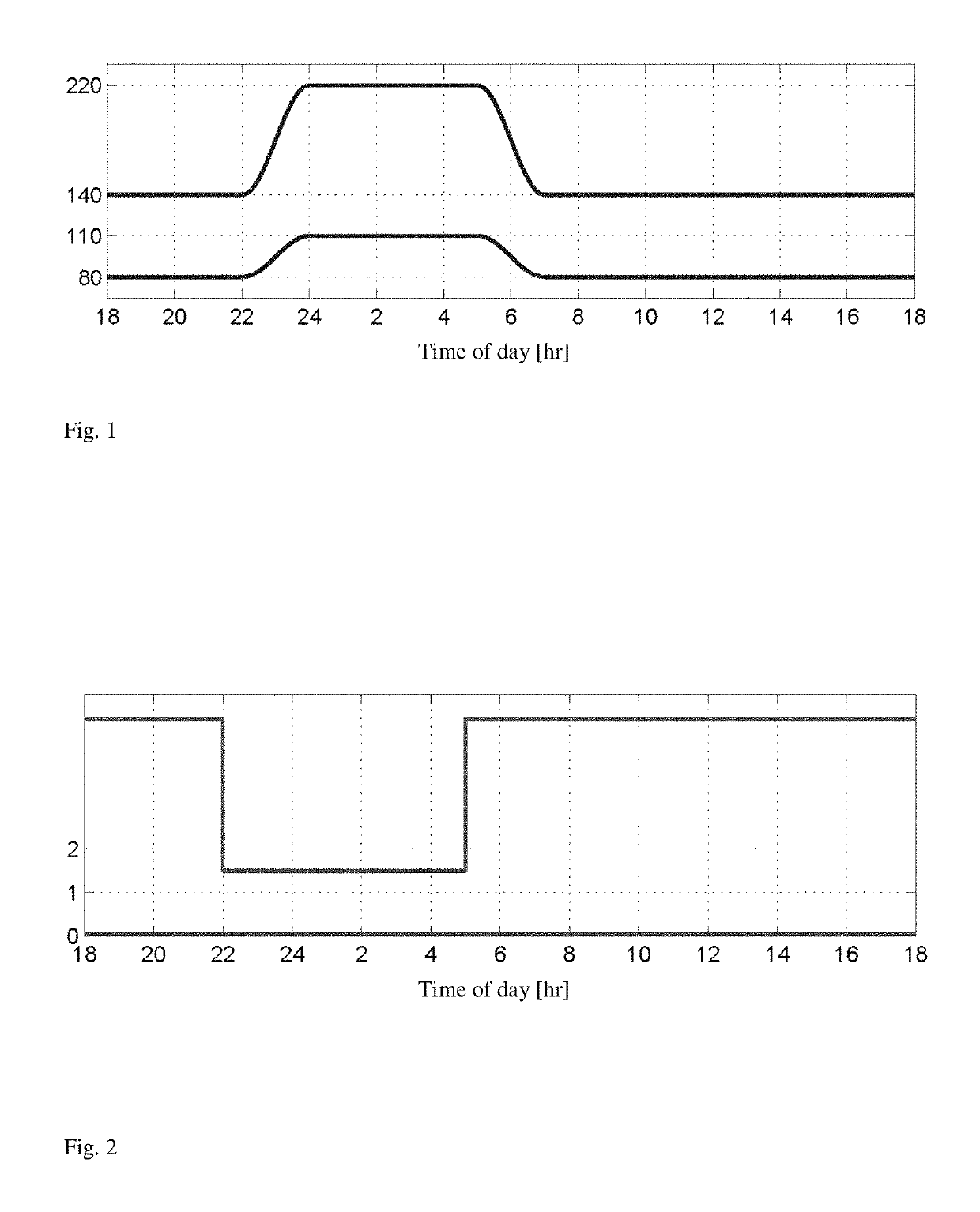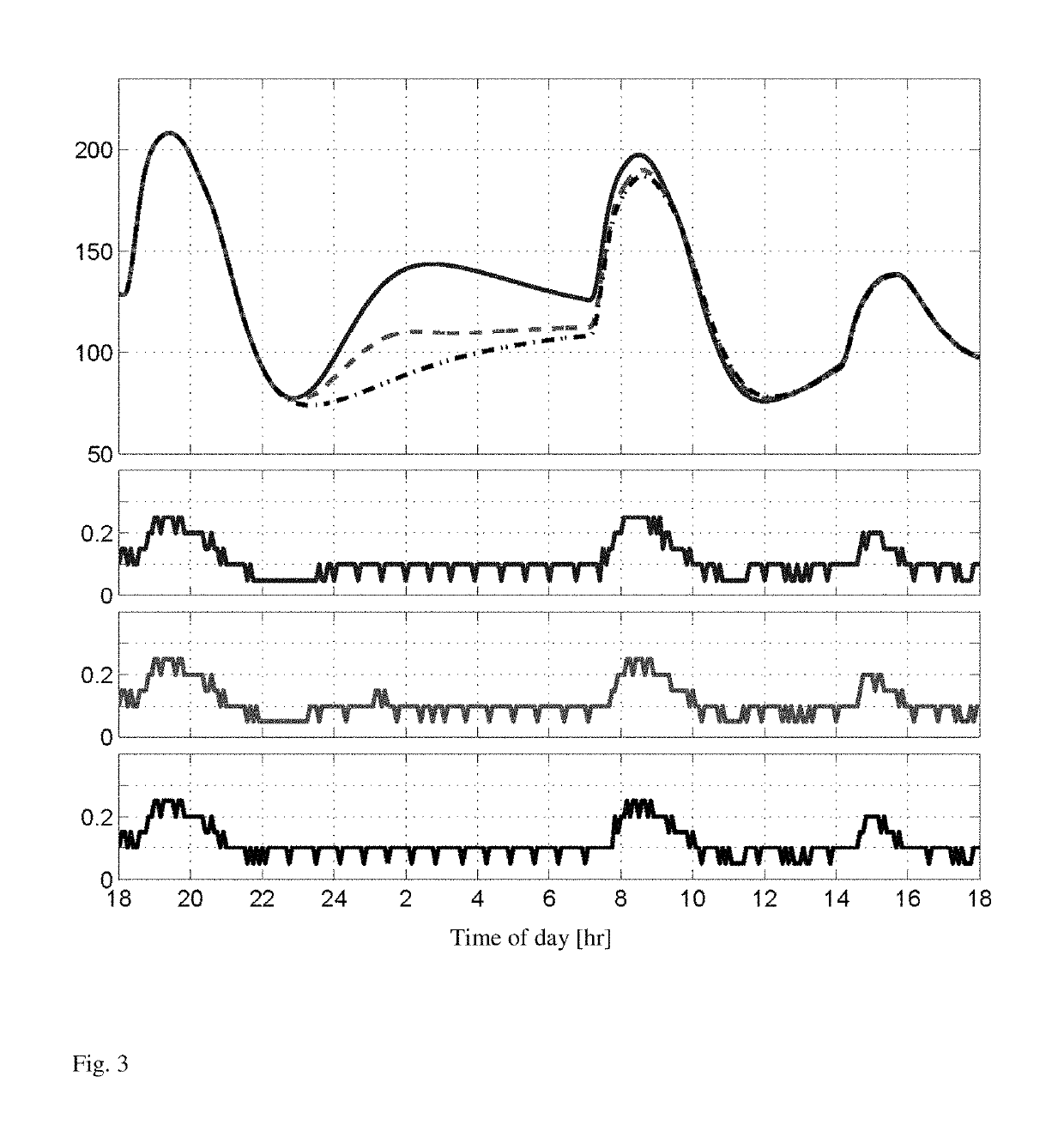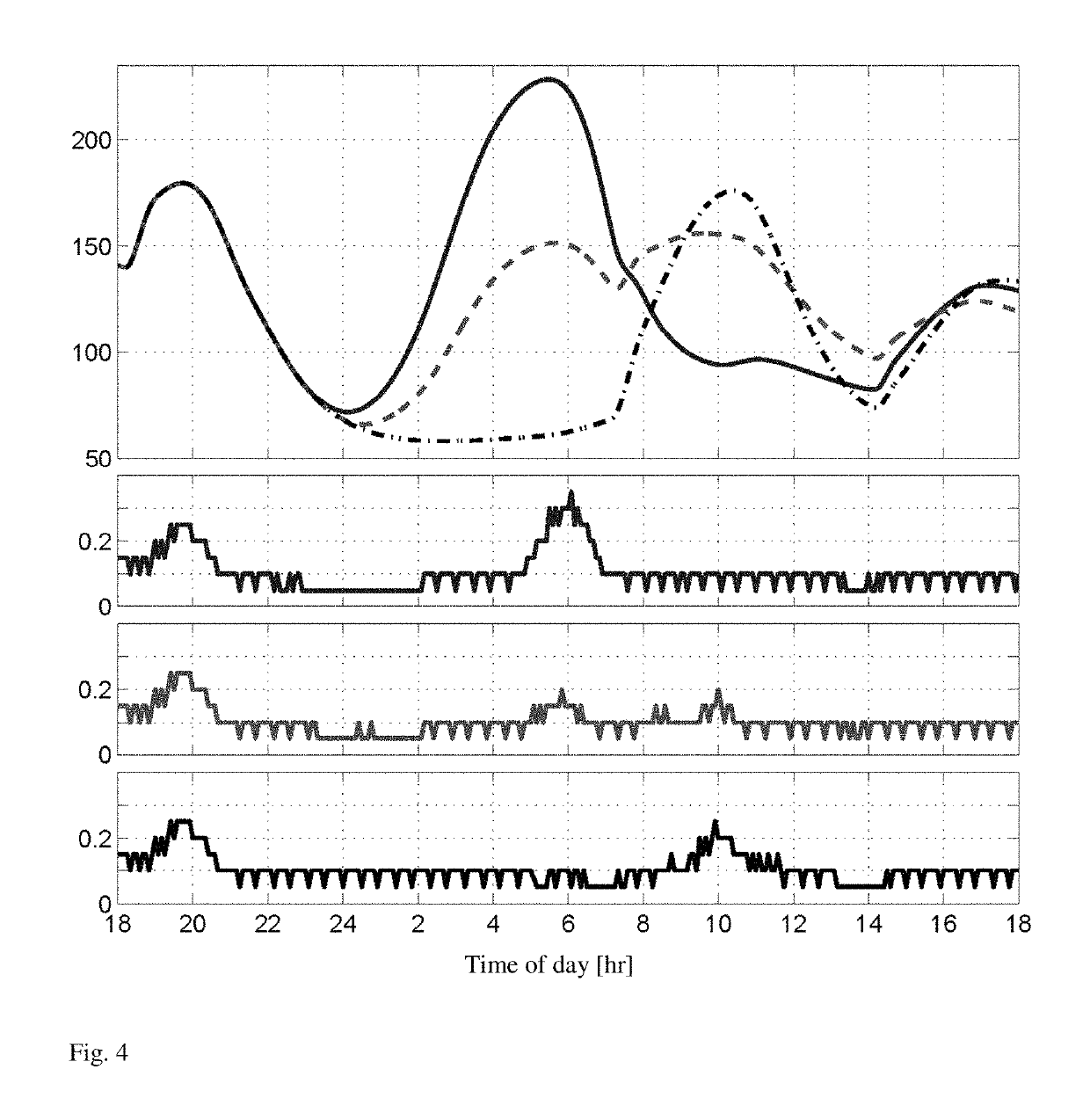Daily periodic target-zone modulation in the model predictive control problem for artificial pancreas for type I diabetes applications
a type i diabetes and artificial pancreas technology, applied in the direction of intravenous devices, metabolism disorders, drugs and medications, etc., can solve the problems of limited scope and length of clinical tests, and achieve the effects of facilitating the testing and verification of glycemia controllers, and reducing the risk of diabetes
- Summary
- Abstract
- Description
- Claims
- Application Information
AI Technical Summary
Benefits of technology
Problems solved by technology
Method used
Image
Examples
Embodiment Construction
[0024]The invention provides an artificial pancreas for automated insulin delivery to patients with type 1 diabetes mellitus (T1DM). A crucial element of any fully automated artificial pancreas is a strategy to perform safe and effective insulin dosing, and we have successfully developed control algorithms that achieve this task. Rigorous testing requires first to operate controllers for multi-day periods, and second to move trials from clinics to an outpatient environment. The invention provides a fully automatic control strategy that enforces safe insulin delivery throughout both day and night.
[0025]The control strategy employs zone model predictive control, whereby real-time optimization, based on a model of a human's insulin response, is utilized to regulate blood glucose levels to a safe zone. One inventive aspect of our solution is the use of time-dependent zones that smoothly modulate the controller correction based on the time of day. Specifically, the controller strategical...
PUM
 Login to View More
Login to View More Abstract
Description
Claims
Application Information
 Login to View More
Login to View More - R&D
- Intellectual Property
- Life Sciences
- Materials
- Tech Scout
- Unparalleled Data Quality
- Higher Quality Content
- 60% Fewer Hallucinations
Browse by: Latest US Patents, China's latest patents, Technical Efficacy Thesaurus, Application Domain, Technology Topic, Popular Technical Reports.
© 2025 PatSnap. All rights reserved.Legal|Privacy policy|Modern Slavery Act Transparency Statement|Sitemap|About US| Contact US: help@patsnap.com



